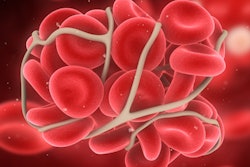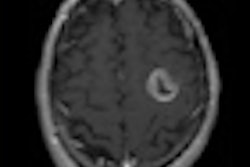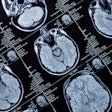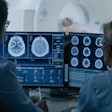A machine-learning algorithm used with resting-state functional MRI can help clinicians foresee surgical outcomes in high-grade glioma patients, researchers have found.
A team led by Patrick Luckett, PhD, of Washington University School of Medicine in St. Louis, MO, developed a random-forest classifier that was highly accurate for predicting tumor resection outcomes in brain cancer patients. The study results were published May 24 in the Journal of Neuro-Oncology.
"The capability to forecast postsurgical functional outcomes from the initial diagnosis could prove advantageous in surgical planning and for better informing patients of their likely treatment outcomes," the group noted.
High-grade glioma is the most common and fatal brain cancer of the central nervous system, accounting for 60% to 70% of new cases and carrying a median survival rate of 14 months, Luckett and colleagues explained. It is commonly treated by surgery to remove the tumor -- which can lead to functional and cognitive deficits -- followed by courses of radiation and chemotherapy. The traditional noninvasive method for mapping functional brain networks before surgery has been "task" fMRI, but this method can be limited by the need for patients to participate in specific cognitive or motor tasks during the scan, which may be unfeasible for some.
That's where resting state fMRI comes in, as it allows researchers "to examine the intrinsic functional connectivity of the brain and the associated interactions between different networks without the confounding effects of task performance;" can be conducted under sedation; and enables mapping of multiple networks at the same time.
Luckett and colleagues explored ways to predict functional outcomes in high-grade glioma patients before surgery -- in the hope that this would translate to better disease management and patient care. They conducted a study that included 102 high-grade glioma patients from the neurosurgery brain tumor service at Washington University Medical Center. Of these, 80% were used for training the algorithm and 20% were used for testing.
All patients underwent structural neuroimaging and resting-state functional MRI before surgery; the researchers used demographic factors, measures of resting-state network connectivity, tumor location, and tumor volume to train a machine-learning algorithm to predict functional surgical outcomes based on Karnofsky Performance Status (KPS). This metric helps clinicians measure cancer patients' ability to perform ordinary tasks; scores range from 0 to 100, with higher scores indicating that the individual is better able to carry out daily activities).
In cross-validation testing, the model performed at an accuracy of 94.1% and an area under the receiver operating curve (AUC) of 0.97 for characterizing functional outcomes after surgery using the KPS metric.
The group also found the following:
- The strongest predictors identified by the model for predicting functional outcomes after brain surgery included the quality of resting state network connectivity between somatomotor, visual, auditory, and reward networks.
- The relation of the tumor to dorsal attention, cingulo-opercular, and basal ganglia networks were strong predictors of functional outcomes.
- Age at diagnosis and survival duration were associated with poor functional outcomes.
- A history of elevated incidence rates of hypertension and hyperlipidemia was associated with poorer functional outcomes.
- Higher rates of seizures were observed with poor functional outcomes.
- Tumor volume was only a moderate functional outcome predictor.
The study results show promise for improved care of brain cancer patients, according to the team.
"Predicting KPS in brain tumor patients prior to treatment can … [help guide] preoperative planning … balancing long-term survival with recovery and potential complications … [inform] the need for rehabilitation and support services, allowing healthcare teams to arrange personalized rehabilitation programs such as physical, occupational, or speech therapy for those with lower predicted KPS … [help to] create individualized monitoring and follow-up plans, determine the frequency of follow-up visits, and integrate quality of life assessments to monitor any changes in KPS … [guide] support interventions … [and facilitate] mental health interventions and family counseling services to manage the care responsibilities and emotional stress associated with high-grade glioma," it concluded.
The complete study can be found here.



















